![]()
"I want people to get infuriated by it,"
Martin Scorsese said of his initial impulse in making "
Goodfellas." "I wanted to seduce everyone into the movie and into the style. And then just take them apart with it."
In fact, some people were appalled and repulsed at the early screenings of "Goodfellas," which opened 25 years ago this week (on Sept. 19, 1990). At one test preview, there were mass walkouts within the first 10 minutes. But Scorsese's angry gesture soon backfired. Viewers did get seduced by the lowlife mobsters (taken from Nicholas Pileggi's 1985 true-crime book "Wiseguy") and the director's own adrenalized filmmaking style. Instead of an assault on the audience, "Goodfellas" became
one of the most influential and beloved movies of the past quarter century.
In honor of "Goodfellas" turning 25 this week, here are 25 things you need to know about Scorsese's masterpiece. Don't let that red sauce burn on the stove while you're reading.
![]() 1.
1. The real Henry Hill was an associate of the Lucchese crime family, who later went into the federal witness protection program in 1980. Pileggi's interviews with Hill made up the bulk of "Wiseguy." He earned a reported $480,000 as a consultant on the film, whose details he would later praise as 90 percent accurate.
2. Unlike the character portrayed by
Ray Liotta, who witnesses several murders but never kills anyone himself, Hill admitted to Howard Stern that he had murdered three people on orders from Paul Vario, the real-life model for Paulie Cicero.
3. The real Tommy De Vito (as played by
Joe Pesci) was named Tommy "Two Gun" DeSimone. Unlike the diminutive Pesci, DeSimone was over six feet tall and built like a heavyweight boxer. In the film, he's whacked for his own unauthorized whacking of made man William "Billy Batts" Bentvena, but in real life, Batts wasn't the only mafioso that Tommy killed without permission. He also killed Ronald "Foxy" Jerothe. Both victims were associates of John Gotti, future boss of the rival Gambino family.
4. Paul Vario (renamed Paulie Cicero in "Goodfellas" and played by
Paul Sorvino) was the real-life boss of the crew that included Hill, Burke, and DeSimone. Hill claimed that Vario had an affair with his wife, Kare,n (played by
Lorraine Bracco) while Hill was in prison, though the movie doesn't mention it. Vario died in prison in 1988.
5. Scorsese phoned Pileggi's office to talk about optioning the film rights to "Wiseguy," but when the author saw a message that said, "Call Martin Scorsese," he thought it was a joke and didn't follow up. But the filmmaker called back and said, "I've been looking for this book for years." Pileggi replied, "I've been waiting for this phone call all my life."
![]() 6.
6. Marlon Brando almost talked Scorsese (pictured, right) out of making "Goodfellas," saying the director would just be repeating what he'd done in "Mean Streets" and "Raging Bull." But Scorsese's longtime editor, Thelma Schoonmaker, read Pileggi's tale to her husband, legendary British film director Michael Powell. Convinced that the story offered a fresh, funny take on the gangster genre, Powell told Scorsese, "You must do it," and changed Scorsese's mind.
7. Scorsese and Pileggi changed the movie's title from "Wiseguy" to "Goodfellas" to avoid confusion with CBS' then-current mob drama series "Wiseguy."
8. For the sake of authenticity, Ray Liotta turned to tapes of the FBI's conversations with Hill. The actor would listen to them in his car and mimic Hill's speech patterns as he drove to and from the set.
9. De Niro also relied on Hill for authenticity, going through the FBI to contact their protected witness and quiz Hill about the way Jimmy would hold a cigarette or a shot glass. Sometimes he'd call Hill several times in a day. Scorsese, however, has said he spoke to Hill only once, when the film was nearly finished.
10. Scorsese often cast his parents in cameos in his movies, but in "Goodfellas," he really put them to work. His mom plays Tommy's mom, and his dad plays a mobster (he can be seen cooking sauce in the prison-dinner sequence). But Scorsese also had his parents starch the extraordinarily pointy shirt collars the mobsters wear; he didn't trust anyone else to do the job right. The senior Scorseses also cooked that stockpot of red sauce that Henry spends all day simmering near the end of the movie.
![]() 11.
11. The notorious "Funny how?" sequence (pictured above) was improvised by Pesci and Liotta, based on a conversation Pesci had once had with someone Scorsese characterized as "a dangerous man." This time, Pesci got to be the dangerous man. He improvised the lines in rehearsal, Scorsese had them transcribed, and the actors memorized them before the cameras rolled.
12. The celebrated Steadicam tracking shot through the bowels of the Copacabana was inspired by just a sentence in Pileggi's book noting that, when Hill would visit the famous nightclub, he'd enter through the kitchen. Scorsese and cinematographer Michael Ballhaus turned Henry and Karen's arrival for a show at the club into a mini-epic -- one of the most famous oners in movie history. The director insisted on getting the entire shot in one take. Ballhaus said it took eight tries, but they got it, and it didn't even take up a full day of shooting.
13. Hill claimed that Tommy's near-lethal pistol-whipping of Billy Batts was fairly accurate, except that in real life, DeSimone hit him so hard that he broke the gun.
14. During the sequence where Tommy fatally empties his .45 into Spider (Michael Imperioli), poor Imperioli stumbled backward into the bar so forcefully that he slashed his hand on a glass pitcher and had to be taken to the emergency room to have the wound stitched up.
15. Edward McDonald, the prosecutor who talked Hill into turning state's evidence, had the guts to suggest to Scorsese that he should play himself in the movie. After giving McDonald a screen test, Scorsese agreed.
![]() 16.
16. Schoonmaker has said that she and Scorsese especially enjoyed putting together the lengthy montage that makes up Henry's last day as a wiseguy (above) because they made a point of experimenting and violating every rule of classical editing in order to simulate the jagged, out-of-control rhythms of Henry's cocaine-fueled paranoia. Test audiences found the sequence irritating, prompting Schoonmaker and Scorsese to make the sequence even faster and edgier.
17. The ratings board initially deemed the film too violent for an R rating. Scorsese had to trim bloodletting from 10 scenes before the board relented.
18. The 1978 Lufthansa heist, as depicted in the movie, was indeed the largest-value robbery in American history up to that point, netting $5 million in cash and nearly a million more in jewelry. As in the film, law enforcement suspected Jimmy's crew almost immediately, leading him to have most of the co-conspirators killed. The biggest break in the case didn't come until 2014 with
the arrest of Vincent Asaro, then 78, a former Gambino soldier and alleged co-conspirator (though Hill claimed Asaro wasn't involved).The loot has never been found.
19. Henry, at the end of the movie, may have complained about having to live the rest of his life as an ordinary schnook, but it didn't work out that way. He, Karen and their son and daughter were placed in new identities and new homes in various cities, from Omaha to Seattle. But Hill kept blabbing about his real identity to his neighbors and kept getting arrested on drug charges. Eventually, the FBI booted the Hill family from the program. After 25 years of marriage, Henry and Karen were divorced in 1989.
20. A year later, of course, "Goodfellas" made him famous. Hill would go on to tell his own story in books, a website, and various radio interviews with Stern. He marketed his spaghetti sauce online and opened a restaurant called Wiseguys in Connecticut. After he appeared alongside Liotta in an Entertainment Weekly photo shoot in 2006, the actor persuaded him to enter rehab. In 2012, he succumbed to complications from heart disease. He died peacefully at 69 in a Los Angeles hospital bed, surrounded by family.
![]() 21.
21. Unlike Henry, Karen Hill and the couple's children, Gregg and Gina, have maintained assumed identities and kept a relatively low profile. Gregg and Gina did publish a memoir of their own, 2004's "On the Run: A Mafia Childhood."
22. Pileggi's wife, Nora Ephron, wrote her own movie inspired by Henry Hill, "My Blue Heaven." It was a comedy about a flamboyant mobster (Steve Martin) struggling with suburban life while in Witness Protection. It actually came out in theaters a month before "Goodfellas."
23. In the years after "Goodfellas," Sorvino would often appear on TV cooking shows, demonstrating that he was an expert at cutting paper-thin slices of garlic with a razor blade, just like Paulie. In 2010, he finally started marketing his own line of pasta sauces.
24. The film cost a reported $25 million, making it Scorsese's most expensive picture at that point in his career. It earned back $47 million in North America.
25. "Goodfellas" was nominated for six Oscars, including Best Picture, Best Director, Best Adapted Screenplay (for Scorsese and Pileggi), Best Editing, and Best Supporting Actress (for Bracco). Pesci won the movie's only Academy Award, for Best Supporting Actor.
%Slideshow-318509%
![Tom Cruise Visits "The Tonight Show Starring Jimmy Fallon"]()

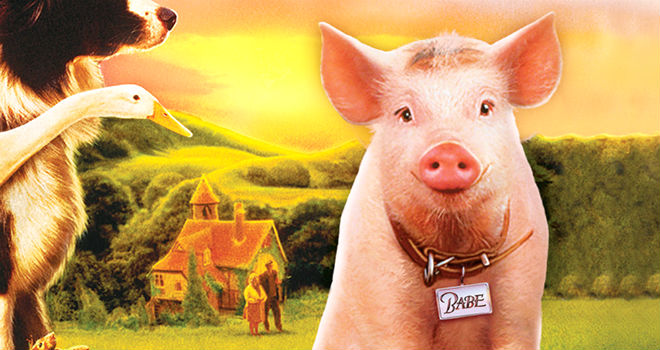 "That'll do, pig. That'll do."
"That'll do, pig. That'll do."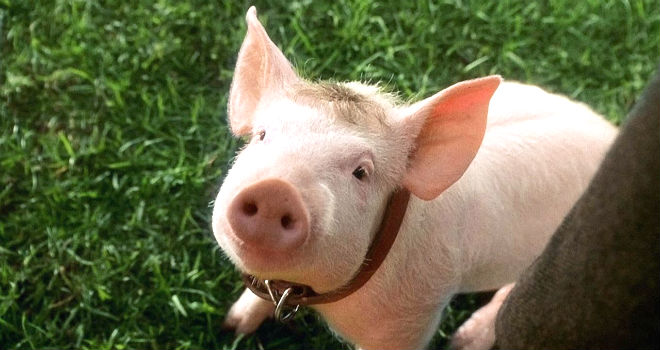 6. To make the animals talk, the filmmakers relied on computerized mouth movements developed by Los Angeles effects house Rhythm & Hues, best known for the talking cat in "Hocus Pocus" and the Coca-Cola polar bear ads.
6. To make the animals talk, the filmmakers relied on computerized mouth movements developed by Los Angeles effects house Rhythm & Hues, best known for the talking cat in "Hocus Pocus" and the Coca-Cola polar bear ads.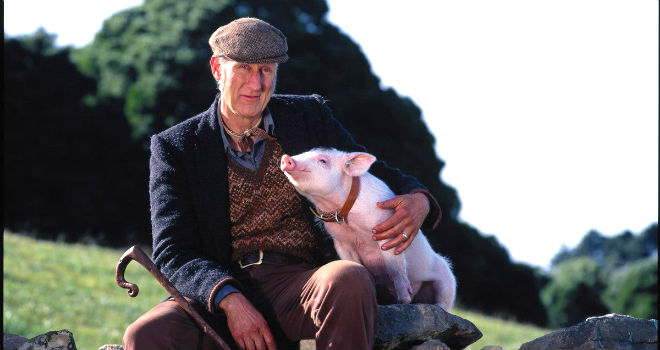 13. Before starring as Farmer Arthur Hoggett in "Babe,"
13. Before starring as Farmer Arthur Hoggett in "Babe," 

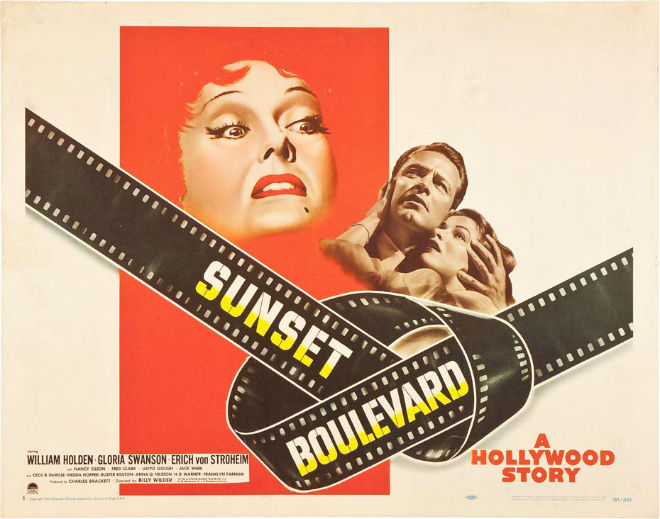 Long before the lurid "E! True Hollywood Story" series, there was "
Long before the lurid "E! True Hollywood Story" series, there was " 1. Initially, Wilder (above) and writing partner Charles Brackett conceived the story as a comedy about a has-been actress making a comeback, and they imagined Mae West as the star. But West found the role unflattering, a problem that continued to make casting difficult after Brackett and Wilder rewrote the film as a drama. They approached such silent-era stars as Mary Pickford, Pola Negri, and even Greta Garbo (who'd starred in the writers' hit "Ninotchka"), but all of them turned down the role of Norma Desmond.
1. Initially, Wilder (above) and writing partner Charles Brackett conceived the story as a comedy about a has-been actress making a comeback, and they imagined Mae West as the star. But West found the role unflattering, a problem that continued to make casting difficult after Brackett and Wilder rewrote the film as a drama. They approached such silent-era stars as Mary Pickford, Pola Negri, and even Greta Garbo (who'd starred in the writers' hit "Ninotchka"), but all of them turned down the role of Norma Desmond.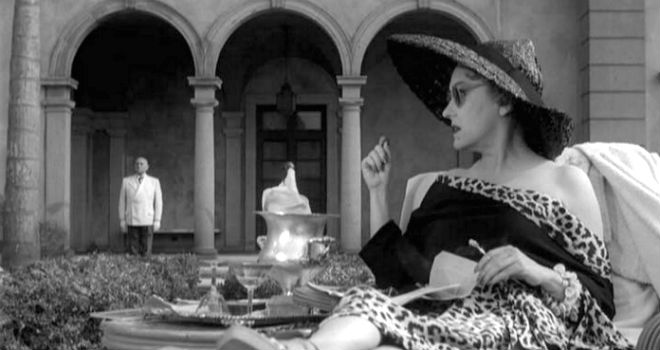 5. The house that played Norma's mansion was really on Wilshire Boulevard, not Sunset. It had belonged to J. Paul Getty's family. It would appear on film again a few years later in "Rebel Without a Cause," shortly before the Gettys tore it down and replaced it with an office high-rise.
5. The house that played Norma's mansion was really on Wilshire Boulevard, not Sunset. It had belonged to J. Paul Getty's family. It would appear on film again a few years later in "Rebel Without a Cause," shortly before the Gettys tore it down and replaced it with an office high-rise.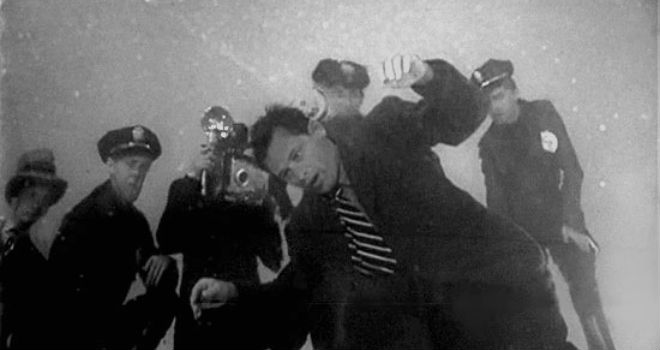 10. That eerie shot of Joe face down in the pool (pictured), seen from underneath with the police and paparazzi hovering over him, was difficult for Wilder to get right. He tried lowering a camera into the pool in a see-through, waterproof box, but he didn't like the result. Ultimately, he succeeded by placing a mirror on the floor of the pool and shooting the reflection of Holden and the cops and photographers.
10. That eerie shot of Joe face down in the pool (pictured), seen from underneath with the police and paparazzi hovering over him, was difficult for Wilder to get right. He tried lowering a camera into the pool in a see-through, waterproof box, but he didn't like the result. Ultimately, he succeeded by placing a mirror on the floor of the pool and shooting the reflection of Holden and the cops and photographers.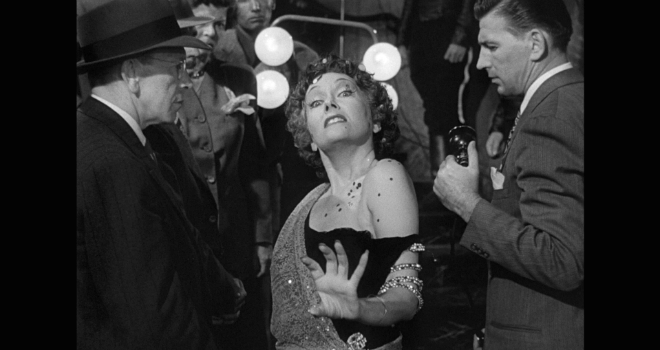 15. Despite the initial outrage from Hollywood insiders, the Academy recognized the film's artistry and nominated it for 11 Oscars, including Best Picture, Best Director, Best Black-and-White Cinematography, and Best Editing. It won for Best Screenplay, Best Black-and-White Art Direction, and Best Score (for composer Franz Waxman). It earned nominations in all four acting categories, for leads Holden and Swanson and supporting players von Stroheim and Olson. It's one of only three films nominated in all four acting categories that didn't win any of them; the other two are "My Man Godfrey" (1936) and "American Hustle" (2013).
15. Despite the initial outrage from Hollywood insiders, the Academy recognized the film's artistry and nominated it for 11 Oscars, including Best Picture, Best Director, Best Black-and-White Cinematography, and Best Editing. It won for Best Screenplay, Best Black-and-White Art Direction, and Best Score (for composer Franz Waxman). It earned nominations in all four acting categories, for leads Holden and Swanson and supporting players von Stroheim and Olson. It's one of only three films nominated in all four acting categories that didn't win any of them; the other two are "My Man Godfrey" (1936) and "American Hustle" (2013).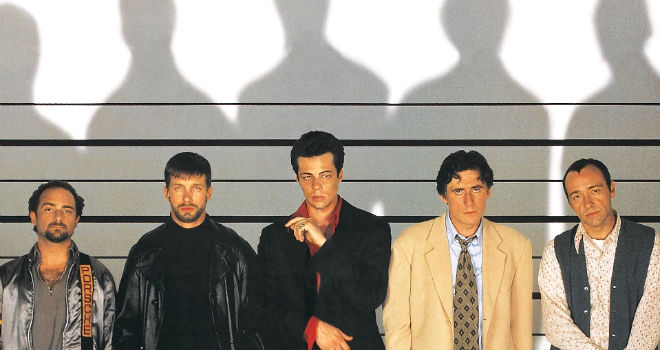 Who is Keyser Soze?
Who is Keyser Soze?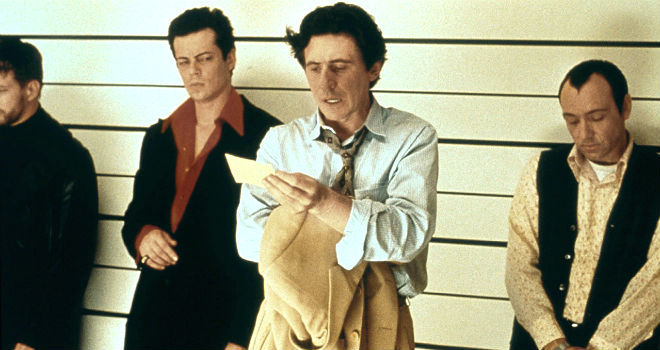 5. Bryan Singer really wanted
5. Bryan Singer really wanted 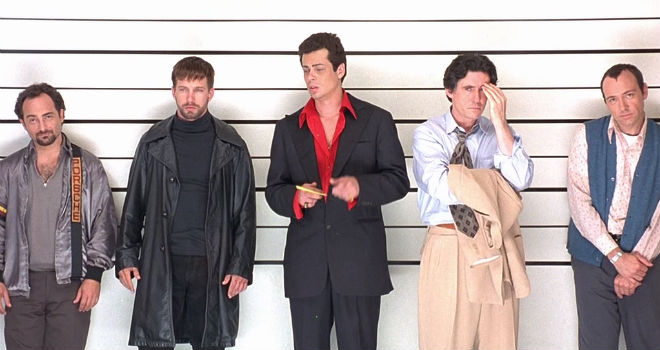 15. What wasn't easy was shooting the line-up scene. It was originally planned to be a "serious" scene, but the actors got a case of the giggles while shooting and were messing around, so Singer opted to go with the funnier version of it. Word 'round the campfire is that the laughter was mostly caused by Del Toro having a bad case of the farts. Yep, that happened.
15. What wasn't easy was shooting the line-up scene. It was originally planned to be a "serious" scene, but the actors got a case of the giggles while shooting and were messing around, so Singer opted to go with the funnier version of it. Word 'round the campfire is that the laughter was mostly caused by Del Toro having a bad case of the farts. Yep, that happened.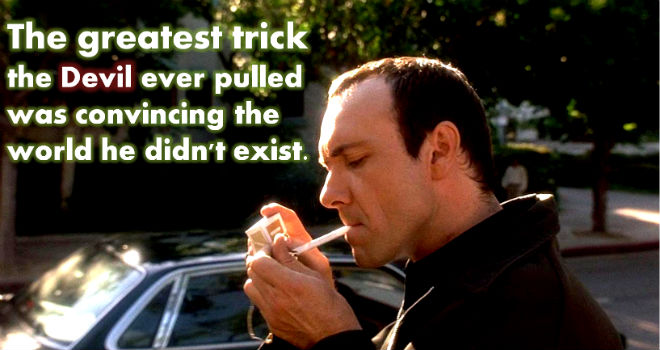 20. The Soze name was caused film executives concern, as they worried that "average" audiences would have no idea how to pronounce it. Hence why the "Who is Keyser Soze?" marketing campaign was launched, to help Rosetta Stone moviegoers on how to say the Big Bad's name.
20. The Soze name was caused film executives concern, as they worried that "average" audiences would have no idea how to pronounce it. Hence why the "Who is Keyser Soze?" marketing campaign was launched, to help Rosetta Stone moviegoers on how to say the Big Bad's name.

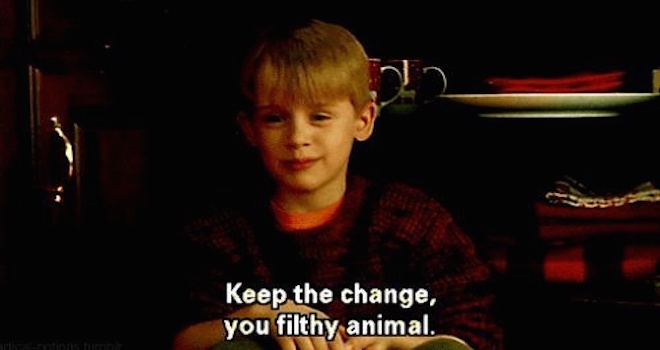 Kevin McCallister is one sadistic little boy, and we've got the GIFs to prove it. Looking back at "
Kevin McCallister is one sadistic little boy, and we've got the GIFs to prove it. Looking back at "

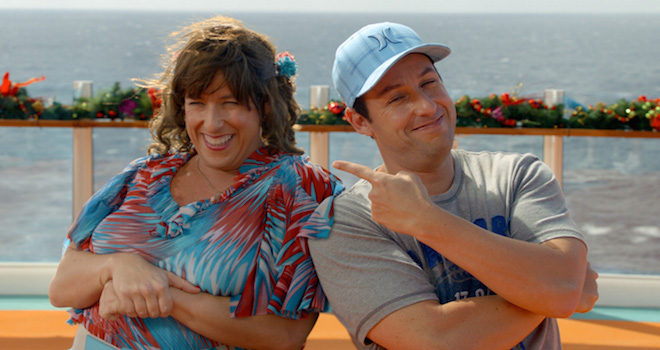
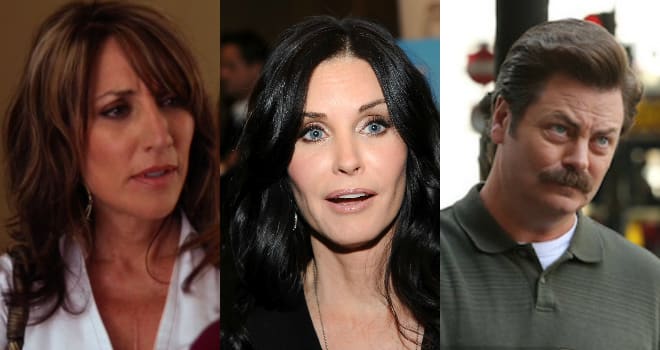
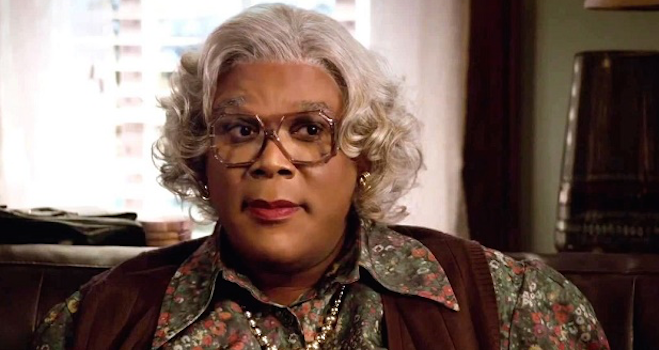

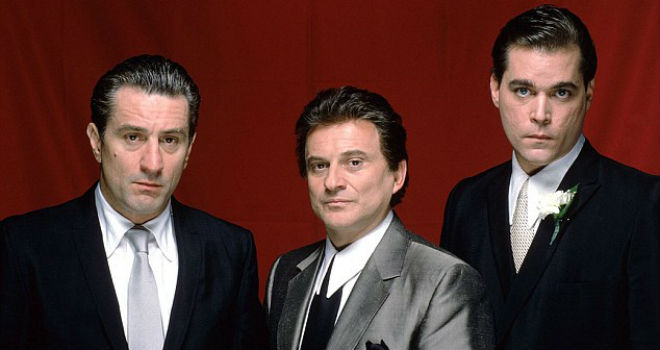 "I want people to get infuriated by it,"
"I want people to get infuriated by it," 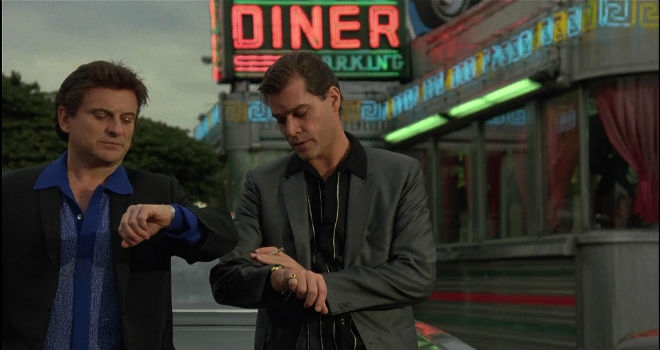 1. The real Henry Hill was an associate of the Lucchese crime family, who later went into the federal witness protection program in 1980. Pileggi's interviews with Hill made up the bulk of "Wiseguy." He earned a reported $480,000 as a consultant on the film, whose details he would later praise as 90 percent accurate.
1. The real Henry Hill was an associate of the Lucchese crime family, who later went into the federal witness protection program in 1980. Pileggi's interviews with Hill made up the bulk of "Wiseguy." He earned a reported $480,000 as a consultant on the film, whose details he would later praise as 90 percent accurate.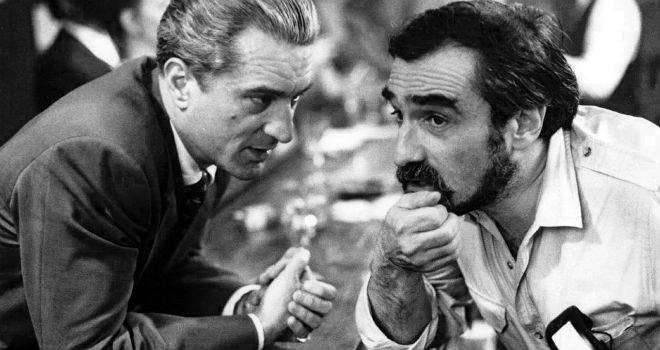 6. Marlon Brando almost talked Scorsese (pictured, right) out of making "Goodfellas," saying the director would just be repeating what he'd done in "Mean Streets" and "Raging Bull." But Scorsese's longtime editor, Thelma Schoonmaker, read Pileggi's tale to her husband, legendary British film director Michael Powell. Convinced that the story offered a fresh, funny take on the gangster genre, Powell told Scorsese, "You must do it," and changed Scorsese's mind.
6. Marlon Brando almost talked Scorsese (pictured, right) out of making "Goodfellas," saying the director would just be repeating what he'd done in "Mean Streets" and "Raging Bull." But Scorsese's longtime editor, Thelma Schoonmaker, read Pileggi's tale to her husband, legendary British film director Michael Powell. Convinced that the story offered a fresh, funny take on the gangster genre, Powell told Scorsese, "You must do it," and changed Scorsese's mind.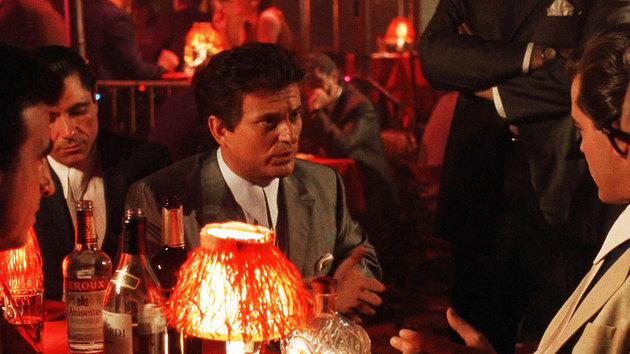 11. The notorious "Funny how?" sequence (pictured above) was improvised by Pesci and Liotta, based on a conversation Pesci had once had with someone Scorsese characterized as "a dangerous man." This time, Pesci got to be the dangerous man. He improvised the lines in rehearsal, Scorsese had them transcribed, and the actors memorized them before the cameras rolled.
11. The notorious "Funny how?" sequence (pictured above) was improvised by Pesci and Liotta, based on a conversation Pesci had once had with someone Scorsese characterized as "a dangerous man." This time, Pesci got to be the dangerous man. He improvised the lines in rehearsal, Scorsese had them transcribed, and the actors memorized them before the cameras rolled.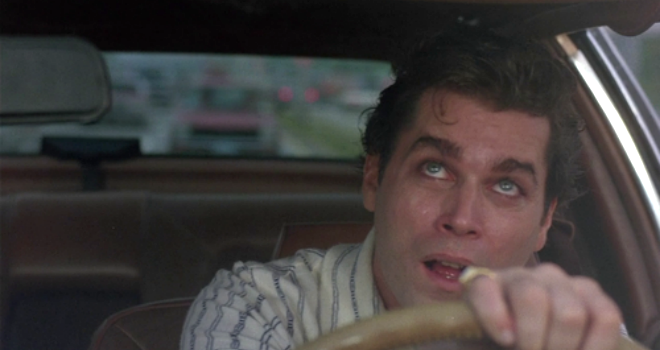 16. Schoonmaker has said that she and Scorsese especially enjoyed putting together the lengthy montage that makes up Henry's last day as a wiseguy (above) because they made a point of experimenting and violating every rule of classical editing in order to simulate the jagged, out-of-control rhythms of Henry's cocaine-fueled paranoia. Test audiences found the sequence irritating, prompting Schoonmaker and Scorsese to make the sequence even faster and edgier.
16. Schoonmaker has said that she and Scorsese especially enjoyed putting together the lengthy montage that makes up Henry's last day as a wiseguy (above) because they made a point of experimenting and violating every rule of classical editing in order to simulate the jagged, out-of-control rhythms of Henry's cocaine-fueled paranoia. Test audiences found the sequence irritating, prompting Schoonmaker and Scorsese to make the sequence even faster and edgier.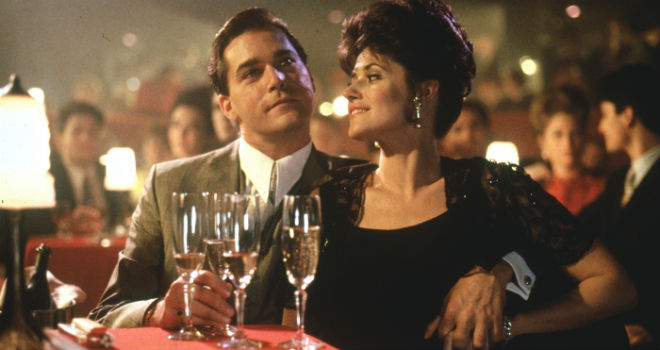 21. Unlike Henry, Karen Hill and the couple's children, Gregg and Gina, have maintained assumed identities and kept a relatively low profile. Gregg and Gina did publish a memoir of their own, 2004's "On the Run: A Mafia Childhood."
21. Unlike Henry, Karen Hill and the couple's children, Gregg and Gina, have maintained assumed identities and kept a relatively low profile. Gregg and Gina did publish a memoir of their own, 2004's "On the Run: A Mafia Childhood."
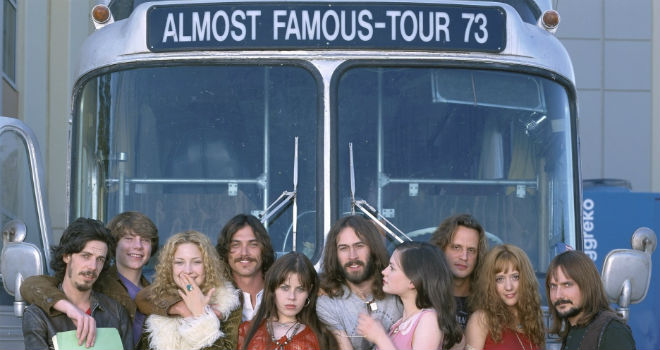
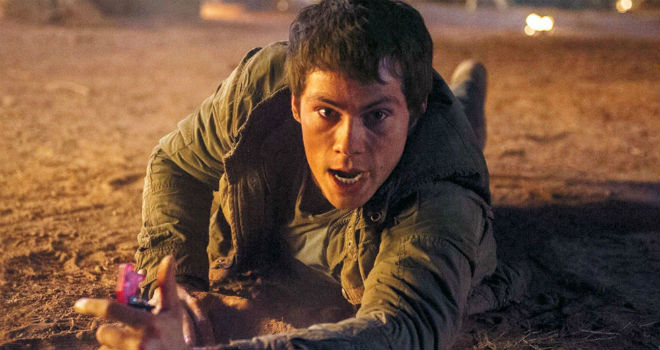 While many moviegoers are looking forward to the November release of "
While many moviegoers are looking forward to the November release of " Don't expect Thomas and friends to be dropped into another isolated experiment with a giant maze in the middle. This time, our heroes will be venturing into the wider world.
Don't expect Thomas and friends to be dropped into another isolated experiment with a giant maze in the middle. This time, our heroes will be venturing into the wider world.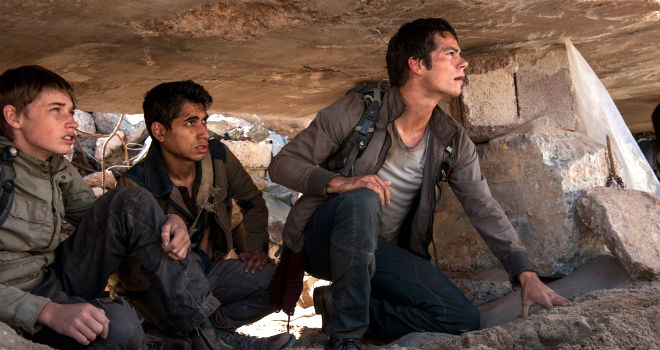 Thomas and friends finally encountered the faceless enemy controlling their every action in the climax of the first movie. Look for the sequel to delve much deeper into the mysterious organization that is WCKD, and reveal why they dumped a bunch of teenagers into a giant death trap.
Thomas and friends finally encountered the faceless enemy controlling their every action in the climax of the first movie. Look for the sequel to delve much deeper into the mysterious organization that is WCKD, and reveal why they dumped a bunch of teenagers into a giant death trap.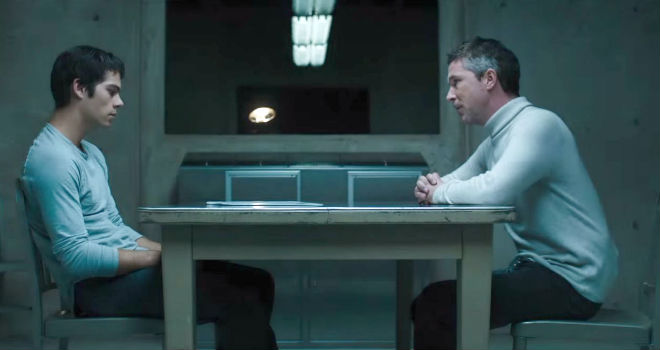 "Scorch Trials" will feature several returning characters from the first movie, including Thomas (Dylan O'Brien), Newt (Thomas Brodie-Sangster), Teresa (Kaya Scodelario), Minho (Ki Hong Lee) and the mysterious researcher Ava Paige (Patricia Clarkson).
"Scorch Trials" will feature several returning characters from the first movie, including Thomas (Dylan O'Brien), Newt (Thomas Brodie-Sangster), Teresa (Kaya Scodelario), Minho (Ki Hong Lee) and the mysterious researcher Ava Paige (Patricia Clarkson).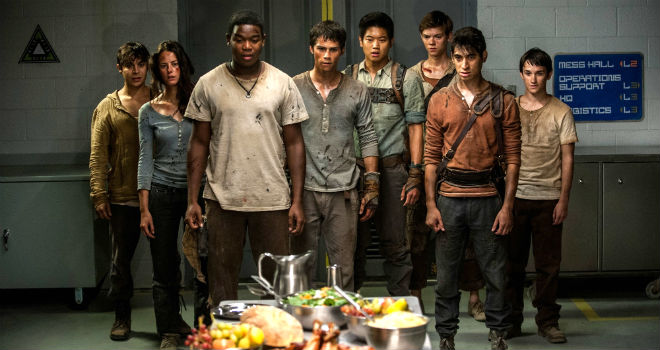 The first "Maze Runner" didn't seem to want viewers to know much about the true nature of this world, or the reason why dozens of innocent teens were dumped into a giant death trap and forced to build a Lord of the Flies-style civilization. As per usual in these types of mystery-driven stories, the characters with the answers always seemed to be the most tight-lipped.
The first "Maze Runner" didn't seem to want viewers to know much about the true nature of this world, or the reason why dozens of innocent teens were dumped into a giant death trap and forced to build a Lord of the Flies-style civilization. As per usual in these types of mystery-driven stories, the characters with the answers always seemed to be the most tight-lipped.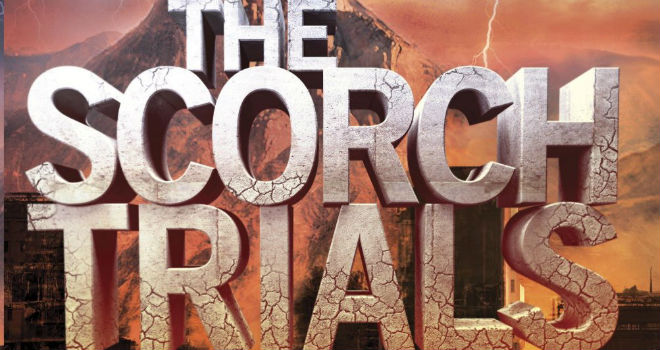 Book purists might want to brace themselves: The adaptation will be a bit different from its source material – more so than the first movie was.
Book purists might want to brace themselves: The adaptation will be a bit different from its source material – more so than the first movie was.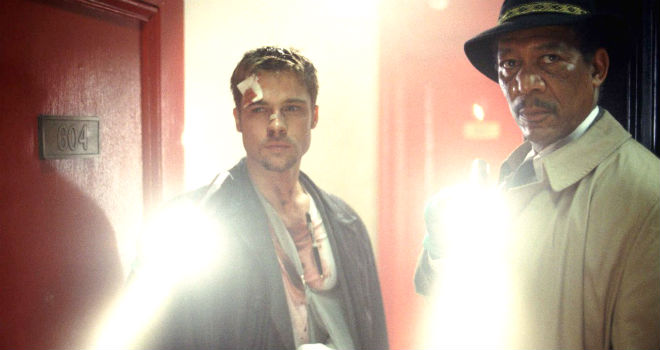 Two decades later, we're still totally creeped out by "
Two decades later, we're still totally creeped out by "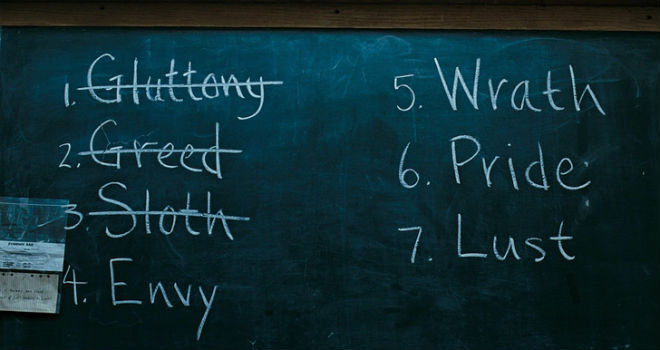 1. "Seven" screenwriter Andrew Kevin Walker has a cameo. He's the corpse seen at the beginning of the movie.
1. "Seven" screenwriter Andrew Kevin Walker has a cameo. He's the corpse seen at the beginning of the movie.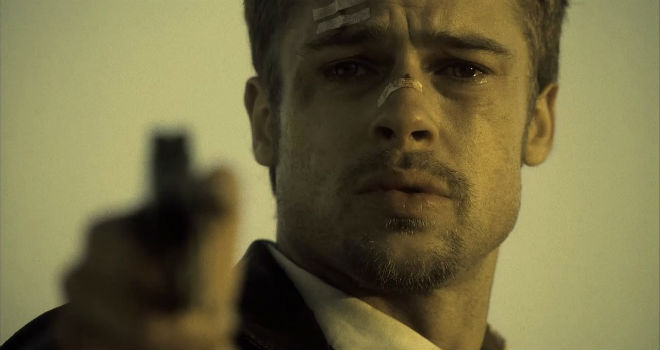 6. Similarly, Brad Pitt was not the first choice to play Somerset's hot-tempered partner, David Mills. But Denzel Washington and
6. Similarly, Brad Pitt was not the first choice to play Somerset's hot-tempered partner, David Mills. But Denzel Washington and 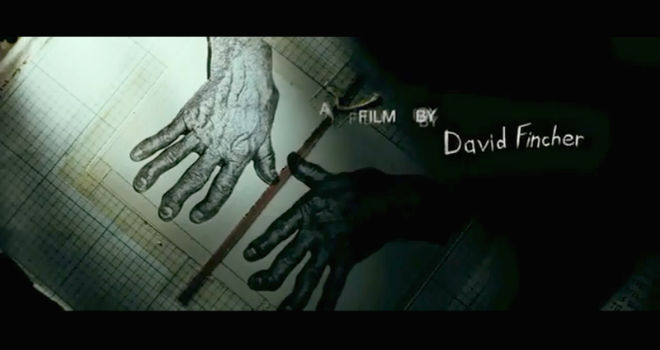 11. Like Fincher, graphic designer Kyle Cooper was working on just his second film, after "Dead Presidents." His credits for that were based on tabletop shots of paper money on fire. Seeing the word "God" burn up on a bill gave Cooper the idea of using the pages of John Doe's notebooks to generate the opening credits for "Seven" (pictured).
11. Like Fincher, graphic designer Kyle Cooper was working on just his second film, after "Dead Presidents." His credits for that were based on tabletop shots of paper money on fire. Seeing the word "God" burn up on a bill gave Cooper the idea of using the pages of John Doe's notebooks to generate the opening credits for "Seven" (pictured).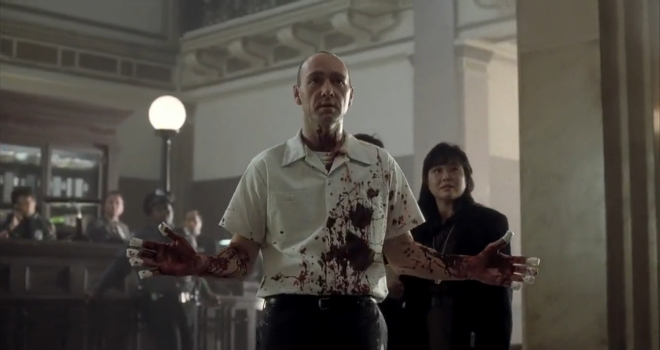 16. John Doe's books -- his handwritten journals documenting his street-level perceptions of humanity -- were handwritten. They took two months to finish writing, and cost a rumored $15,000
16. John Doe's books -- his handwritten journals documenting his street-level perceptions of humanity -- were handwritten. They took two months to finish writing, and cost a rumored $15,000